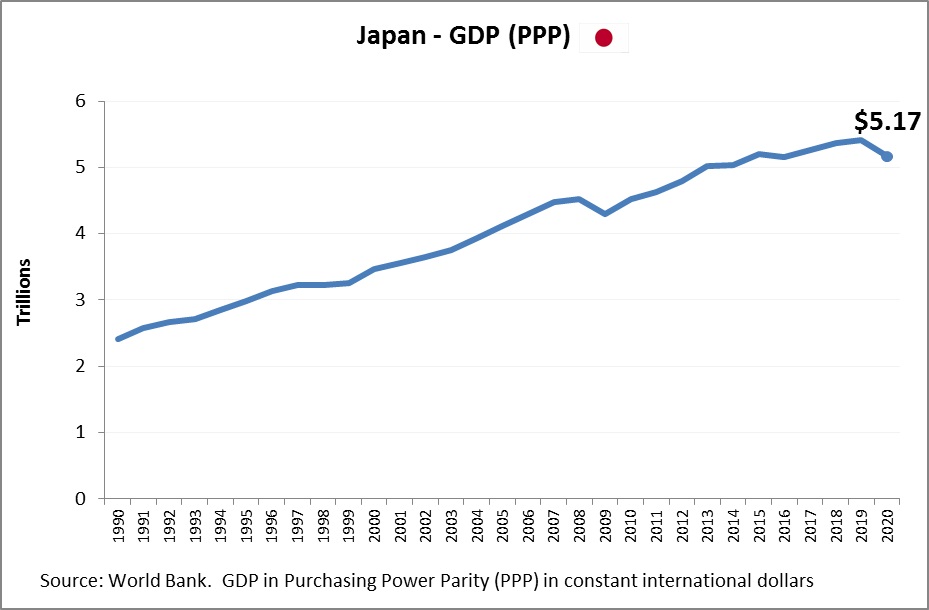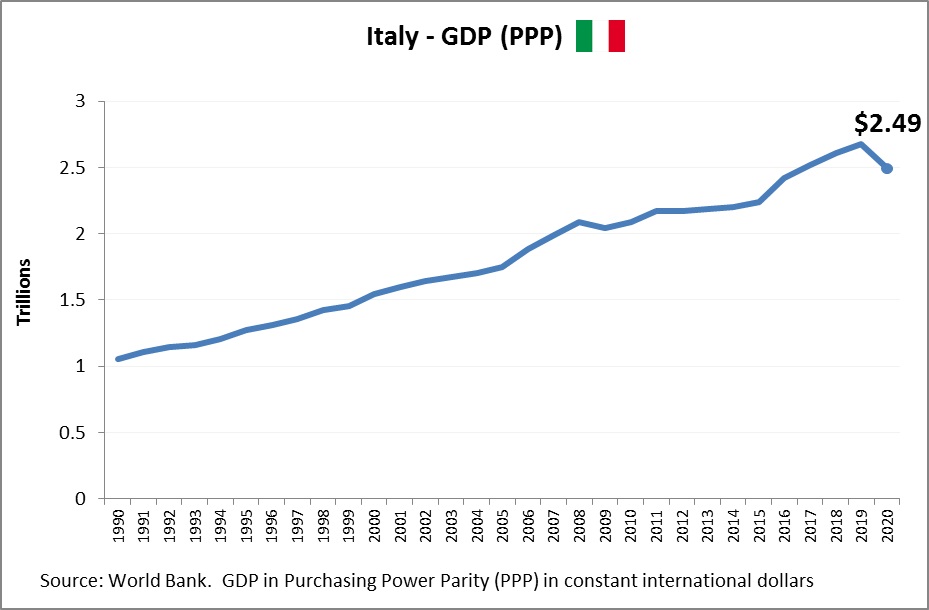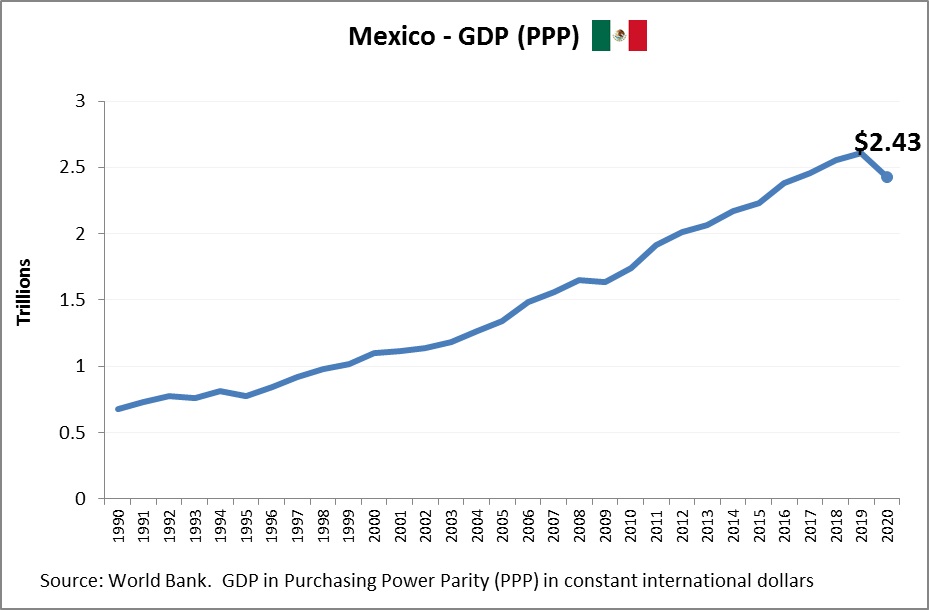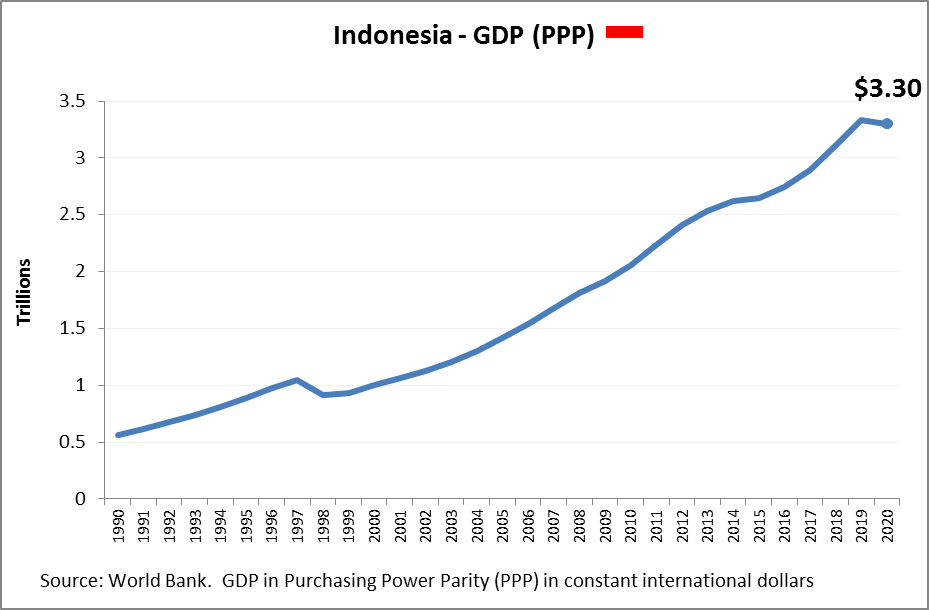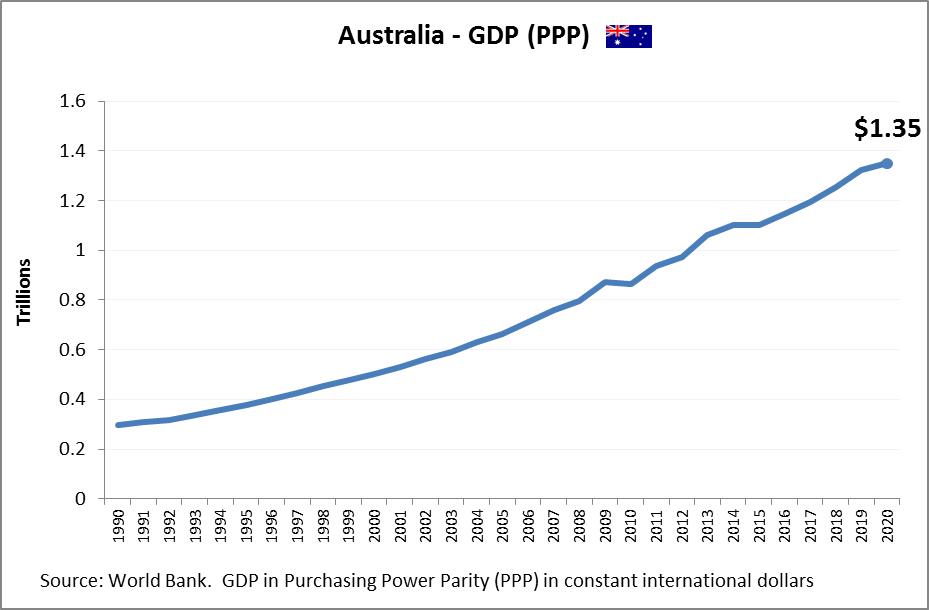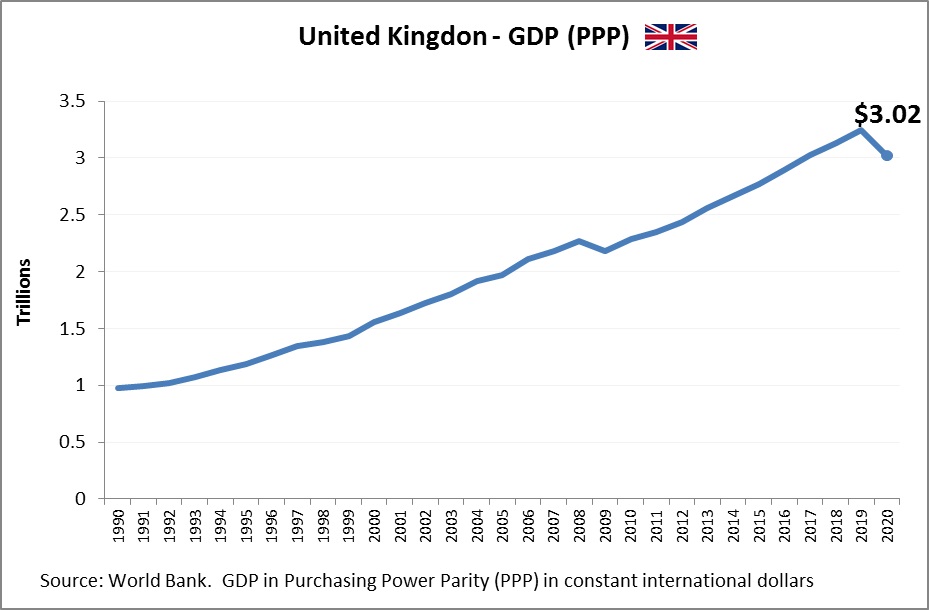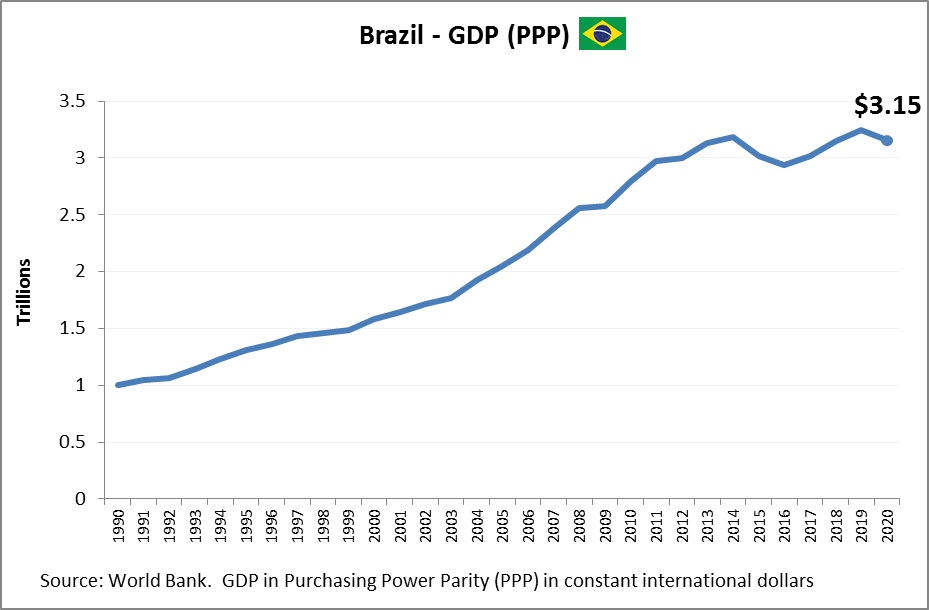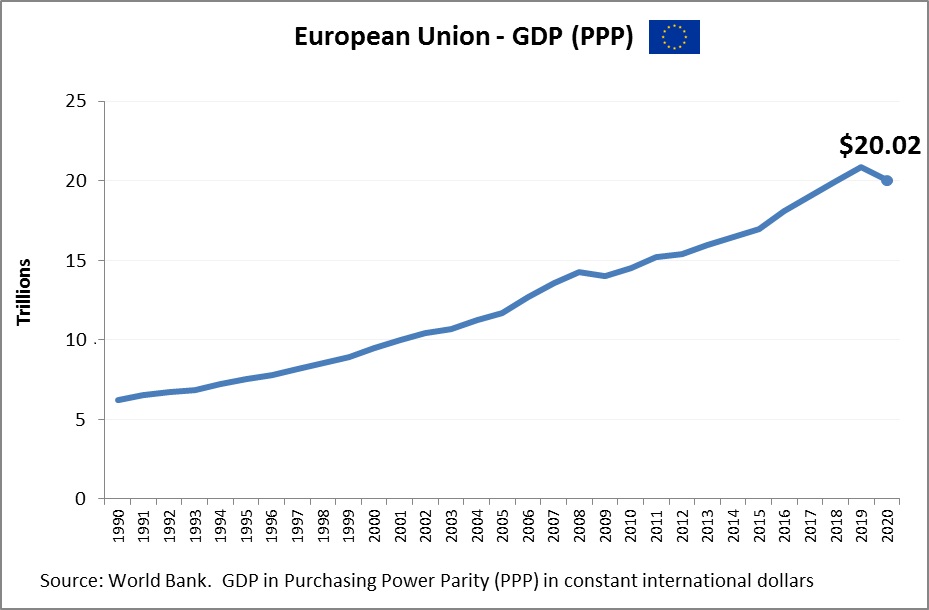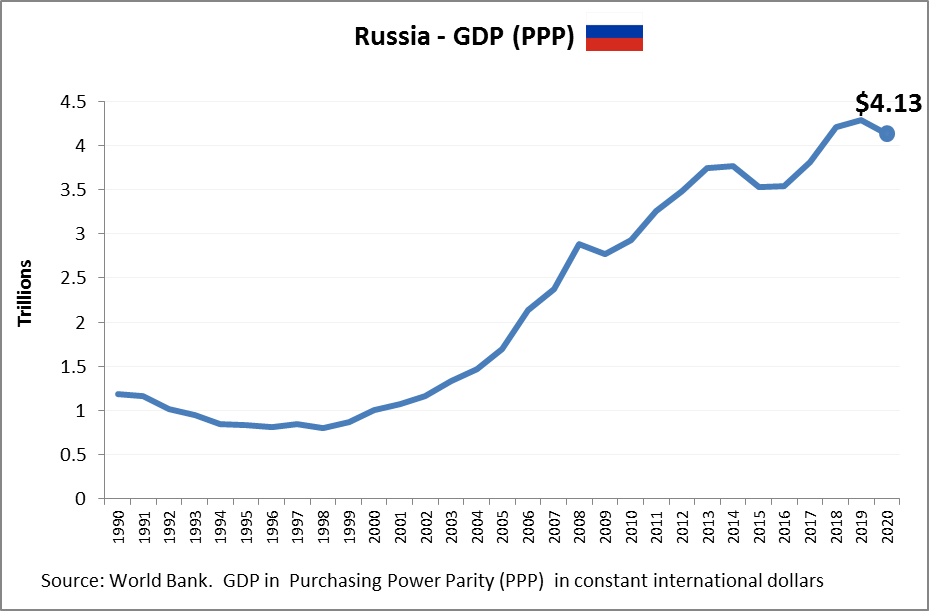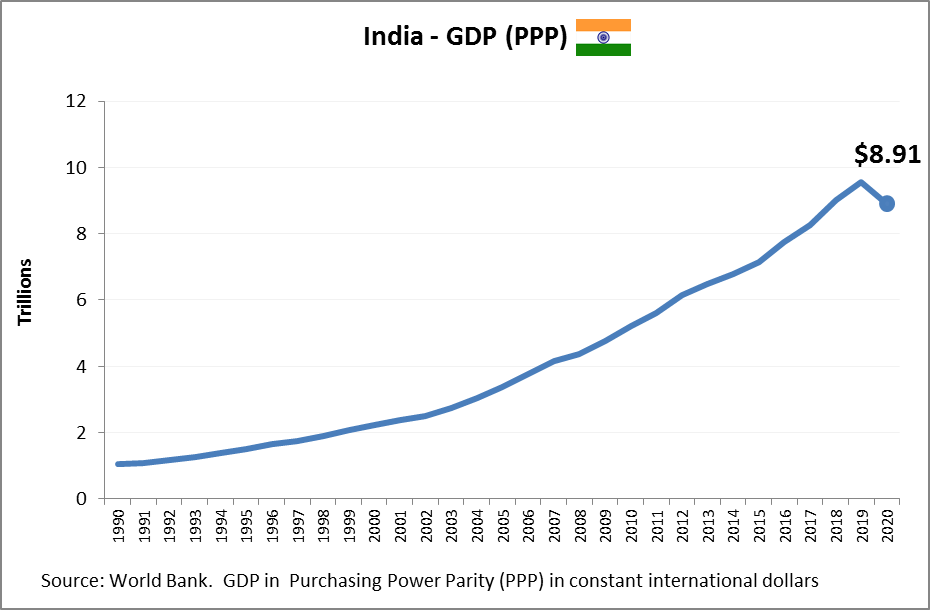Japan economy size measured in Power Purchasing Parity, i.e. comparing relative standard of living and ability to afford goods and services. Japan’s Gross Domestic Product (GDP) chart showing historical economic growth as measured in PPP international dollars.
Japan: Japan holds one of the highest overall GDP PPP rankings globally, a reflection of its highly advanced, technology-driven economy and substantial domestic market. Although its population has been declining, Japan maintains strong economic output through high productivity, innovation in sectors like robotics and electronics, and a solid export base. GDP PPP per capita is also high, showcasing the countrys well-developed infrastructure, high life expectancy, and quality public services. However, long-term economic pressures from demographic aging and deflation persist, even as Japan continues to maintain a very high standard of living.
